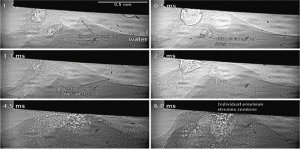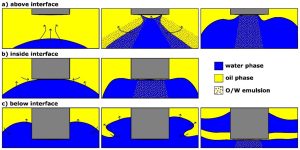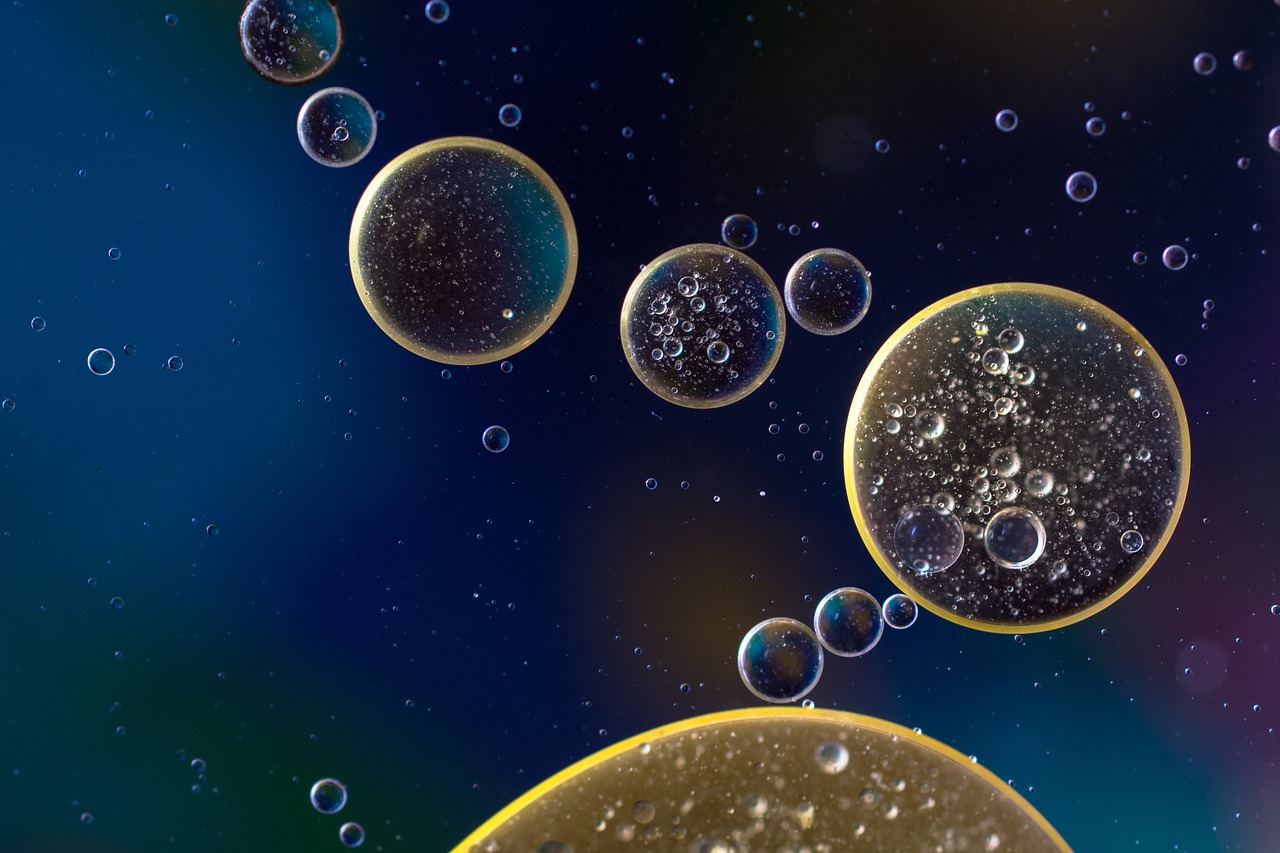Researchers from the Laboratory for hydraulic machines (LVTS) have, together with researchers from Argonne National Laboratory (USA), conducted an experimental study of the collapse of the oil-water interface during ultrasonic eulsification. The results of this study were published in the journal Ultrasonics Sonochemistry (IF=8.4).
Emulsions are heterogeneous systems composed of two immiscible liquids, where one is dispersed inside the other in the form of small droplets. Thus, they enable, for example, the incorporation of oil soluble compounds in water-based products, reducing the necessary amount of solvents and other toxic components. They are prominently used in the food and beverage industry, as well as in medical, cosmetic, agricultural and pharmaceutical products.

Figure 1: High energy X-Ray observation of ultrasonic tip and water-oil interface interaction
In the recent years researchers from LVTS dedicated a lot of effort into understanding of cavitation induced emulsification, mainly in the form of single cavitation bubbles. This particular study shows a step towards a more complex system. They utilized high-speed observation techniques in visible light and high energy X-Rays to visualize the onset of ultrasonic emulsification. During research they discovered that emulsion formation has an acute impact on the behavior of the interface and more importantly on its position relative to the horn. If the horn is placed above, the oil-water interface protrudes towards it, forming oblique emulsion streams, which later combine into a vertical stream. In the case of the horn placed inside the oil-water interface, only minor shifts in interface position occur before the vertical emulsion stream forms. The emulsification mechanism is most complex when the horn is placed below the oil-water interface, forming an intermediate oil layer before emulsion formation.

Figure 2: Different mechanisms of ultrasonic horn emulsification based on initial horn placement relative to the oil-water interface.
Knowledge gained by these detailed observations can be applied to optimization of processes of ultrasonic emulsification but also in a wider scope – for example in continuous flow emulsifiers.
Article is available at: https://doi.org/10.1016/j.ultsonch.2023.106657
